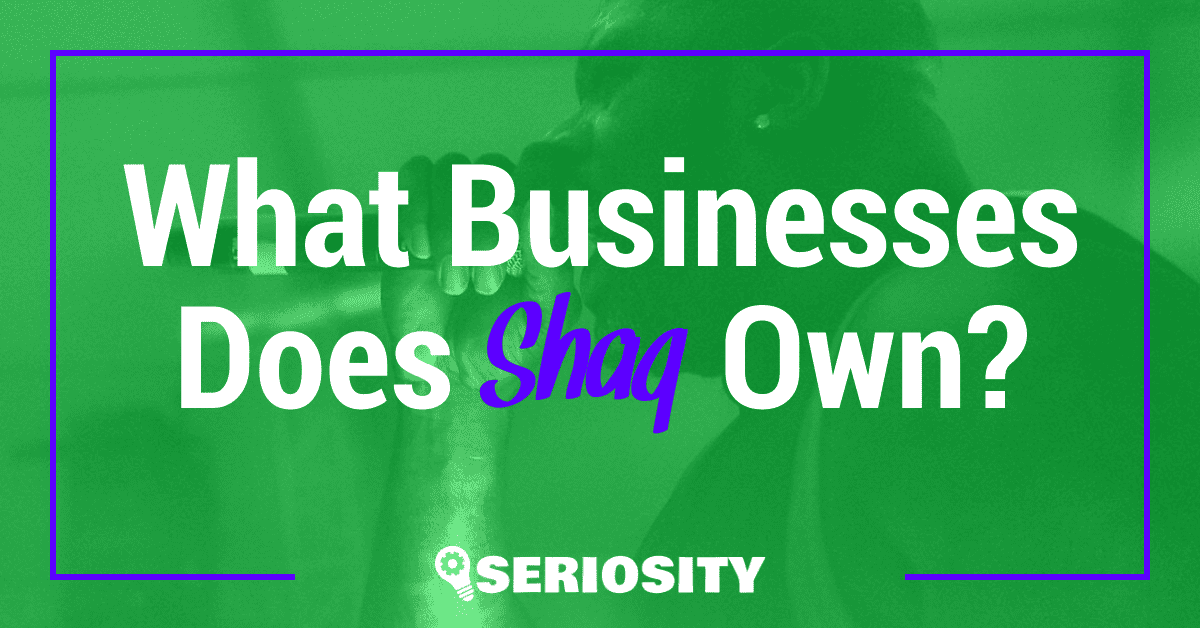Starting a business is an exciting journey, but choosing the right business model can make all the difference between success and failure. With so many options out there, it can feel overwhelming to decide which path to take. Whether you’re launching a startup or looking to pivot your existing company, understanding the various types of business models will give you a solid foundation.

Key Takeaways
- Understanding Business Models: Business models are crucial blueprints detailing how a company creates, delivers, and captures value, essential for strategic planning and long-term growth.
- Types of Business Models: Common business models include B2B (business-to-business), B2C (business-to-consumer), subscription-based, and freemium models, each catering to different customer needs and revenue strategies.
- Innovations in Business Models: Innovative models like the sharing economy, direct-to-consumer (D2C), and marketplace models have disrupted traditional sectors, offering new avenues for growth and customer engagement.
- Impact of Technology: Technological advancements like e-commerce, AI, and blockchain significantly reshape business models, enhancing efficiency, customer satisfaction, and global reach.
- Evaluating Effectiveness: Key performance indicators (KPIs) such as revenue growth, customer acquisition cost (CAC), and churn rate help assess the effectiveness of your business model and guide necessary adjustments.
- Adapting To Market Changes: Successful business models must evolve with market trends and consumer preferences through continuous innovation, technology integration, and customer feedback.
Understanding Business Models
Navigating the world of business models might seem daunting, but it’s crucial for launching a successful venture. Let’s dive into what business models are and why they’re essential in strategic planning.
Definition of Business Models
A business model outlines how a company creates, delivers, and captures value. Think of it as a blueprint for how your business operates. It includes key components like customer segments, value propositions, revenue streams, and cost structures. Understanding your business model helps clarify your path to profitability and growth.
Importance in Strategic Planning
Business models play a pivotal role in strategic planning by providing a framework for decision-making. They help you identify your target market, fine-tune your value proposition, and establish revenue streams. Successful strategic planning aligns your business model with market needs, ensuring your startup or side-hustle thrives in a competitive landscape.
Types of Business Models
Understanding different business models helps you choose the right one for your venture, whether it’s a startup or an existing business looking to pivot.
B2B (Business to Business)
Business-to-Business (B2B) models involve transactions between businesses. These models focus on providing products or services from one business to another. Examples include software companies offering management tools to other businesses and wholesalers supplying retailers.
B2C (Business to Consumer)
Business-to-Consumer (B2C) models involve transactions between businesses and individual consumers. These models target end users. Examples include e-commerce stores selling directly to customers and service providers like streaming platforms.
Subscription-Based Models
Subscription-Based models generate revenue through regular, recurring payments by customers. This model ensures a steady income stream. Examples include software as a service (SaaS) platforms and subscription boxes.
Freemium Models
Freemium models offer basic services for free while charging for premium features. This model attracts a wide user base and converts a portion into paying customers. Examples include mobile apps providing complimentary access and offering in-app purchases for advanced functionalities.
Innovations in Business Models
Innovations in business models reshaped how companies operate, creating new opportunities for entrepreneurs to succeed. Rapid advancements push you to consider innovative models for your ventures.
Examples of Disruptive Business Models
Disruptive business models often revolutionize industries by offering unprecedented value.
- Sharing Economy Models: Platforms like Uber and Airbnb facilitated peer-to-peer transactions, giving users access to goods and services without ownership.
- Direct-to-Consumer (D2C) Models: Brands like Warby Parker and Dollar Shave Club bypass retail intermediaries, reducing costs and enhancing customer relationships.
- Marketplace Models: Companies like Etsy and eBay connect buyers and sellers, taking a commission on transactions.
These examples show how innovative thinking can disrupt traditional industries, opening new avenues for growth and customer engagement.
Impact of Technology on Business Models
Technological advancements significantly reshape business models, especially in today’s digital age.
- E-commerce: Platforms like Shopify and Amazon enable you to sell products online, reaching global audiences without physical stores.
- Artificial Intelligence: AI tools personalize customer experiences on platforms like Netflix and Spotify, enhancing user engagement and retention.
- Blockchain: Blockchain technology ensures secure, transparent transactions, impacting industries from finance to supply chain management.
Consider how technology can enhance your business model, driving efficiency, innovation, and customer satisfaction.
Evaluating Business Model Effectiveness
Understanding how effective your business model is can make or break your venture, especially in the dynamic world of online business and startups.
Key Performance Indicators (KPIs)
KPIs serve as measurable values that indicate how effectively your business achieves key objectives. Common KPIs include:
- Revenue Growth: Monitoring monthly and annual revenue increases helps gauge overall business health.
- Customer Acquisition Cost (CAC): This shows how much you spend to acquire a new customer. Lower CAC, higher efficiency.
- Customer Lifetime Value (CLV): This metric estimates the total revenue a business can expect from a single customer account.
- Churn Rate: This is the percentage of customers who stop using your product within a given period. Lower churn rates indicate higher customer retention.
- Profit Margin: This measures how much profit you’re making on your sales. Higher profit margins usually mean more efficient operations.
Tracking these KPIs, you can better understand how your business model performs and where to adjust for improved results.
Adapting To Market Changes
Your business model must evolve to keep up with market trends and technological advancements. Key strategies include:
- Market Research: Regularly gather information about your industry, competitors, and customer preferences.
- Product Innovation: Continuously improve or add new features to your products or services.
- Flexibility: Adopt flexible policies for pricing, marketing, and product modifications to respond swiftly to market fluctuations.
- Customer Feedback: Use surveys, reviews, and direct interactions to understand customer needs and expectations.
- Technology Integration: Embrace cutting-edge technologies like AI, blockchain, and e-commerce platforms to increase efficiency and customer satisfaction.
By adapting to market changes, your business model stays relevant, competitive, and more likely to succeed in the long term.
Conclusion
Choosing the right business model is a crucial step in your entrepreneurial journey. With so many options like B2B, B2C, subscription-based, and freemium models, there’s a perfect fit for every business. Don’t forget to explore innovative models and leverage technology to stay ahead.
Measuring KPIs like revenue growth and customer acquisition cost will help you gauge your model’s effectiveness. Remember to stay adaptable by conducting market research and gathering customer feedback. Flexibility and innovation are key to thriving in today’s dynamic market.
Your business model isn’t just a plan; it’s a living strategy that evolves with your market. Keep refining it to ensure long-term success and customer satisfaction.
Frequently Asked Questions
What are the different types of business models?
The main types of business models include B2B (Business to Business), B2C (Business to Consumer), subscription-based, and freemium models. Each serves a unique strategic purpose and addresses different market needs.
What are some innovative business models?
Innovative business models include the sharing economy, direct-to-consumer (DTC), and marketplace models. These leverage modern technologies and consumer behaviors for efficiency and customer satisfaction.
How can technology impact business models?
Technologies like e-commerce, AI, and blockchain can significantly enhance operational efficiency, customer engagement, and data security, giving businesses a competitive edge.
What KPIs are essential to evaluate business model effectiveness?
Key performance indicators (KPIs) to assess business model effectiveness include revenue growth, customer acquisition cost (CAC), customer lifetime value (CLV), churn rate, and profit margin.
Why is it critical to adapt business models to market changes?
Adapting business models to market changes is vital for staying competitive. This involves conducting market research, innovating products, gathering customer feedback, and integrating advanced technologies for efficiency.
How can companies gather effective customer feedback?
Companies can gather customer feedback through surveys, social media interactions, direct customer interviews, and product reviews. This feedback is crucial for improving products and services.
What role does market research play in business model adaptation?
Market research helps businesses understand market trends, customer needs, and competitive dynamics, enabling them to make informed strategic decisions and adapt their business models accordingly.
What strategies enhance business model flexibility?
Maintaining business model flexibility can be achieved through continuous innovation, diversifying products/services, maintaining a feedback loop with customers, and quickly integrating new technologies.
How does e-commerce contribute to a business model?
E-commerce enhances a business model by expanding market reach, reducing operational costs, and providing a platform for data-driven decision-making to improve customer experience and boost sales.
Can AI and blockchain improve a business model?
Yes, AI can optimize customer interactions and operational efficiency, while blockchain can enhance data security and transparency, both contributing to a more robust and trustworthy business model.














